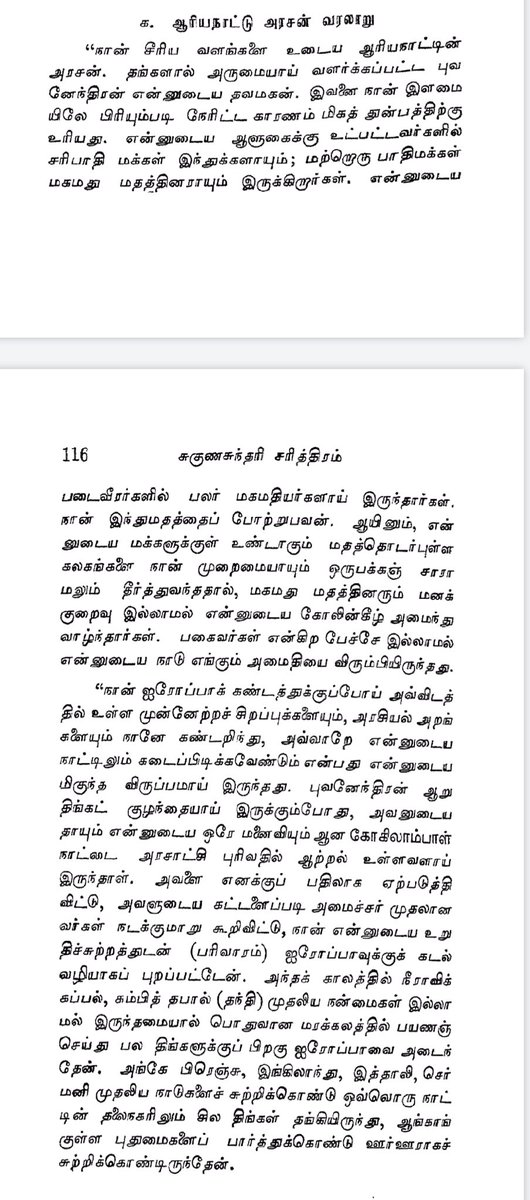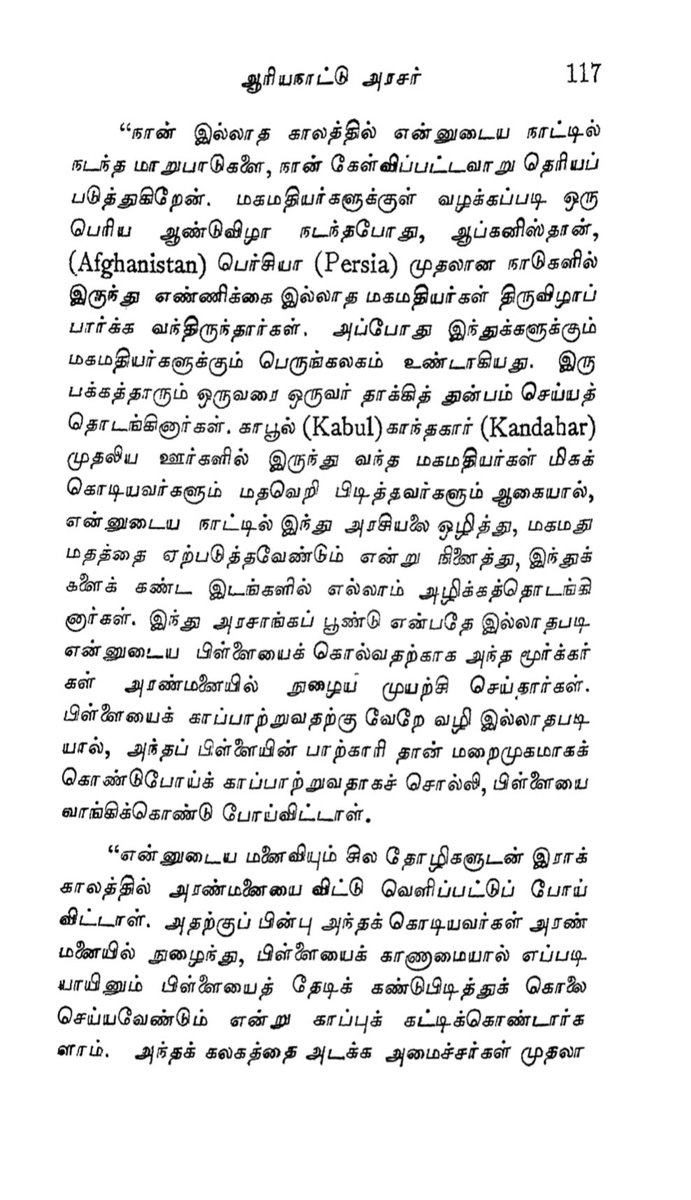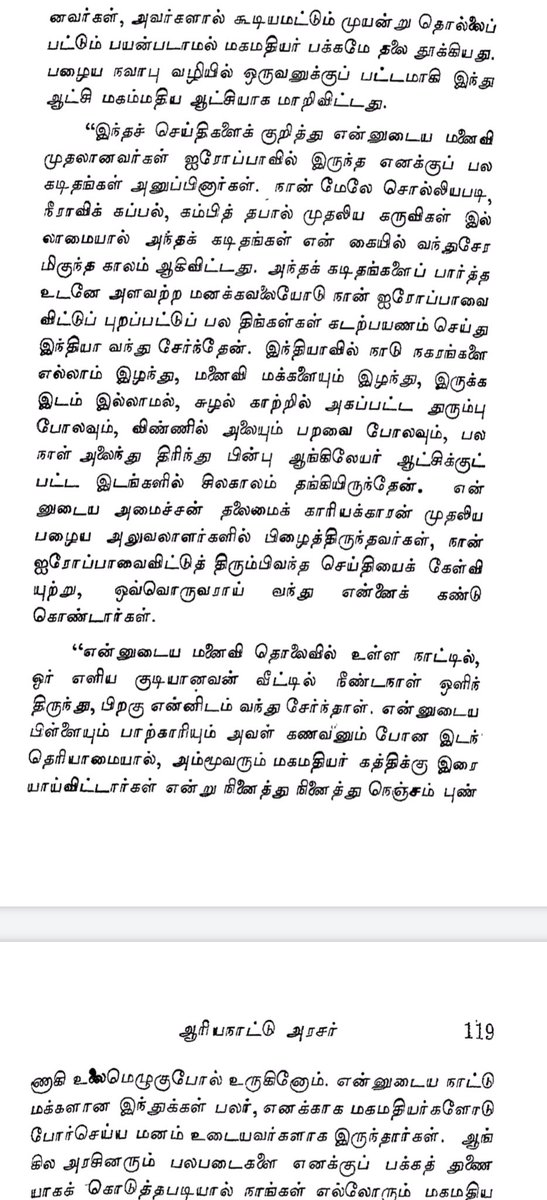Read 2 more tamiZ books-
suguNasundari carittiram சுகுணசுந்தரி சரித்திரம்-vEdanAyagam piLLai’s 2nd novel(1887)
&
maunap piLLaiyAr மௌனப் பிள்ளையார்-collection of humorous stories by sAvi-very funny. But let’s focus on suguNasundari
For piLLai’s 1st novel https://abs.twimg.com/emoji/v2/... draggable="false" alt="👇" title="Down pointing backhand index" aria-label="Emoji: Down pointing backhand index"> https://twitter.com/shrikaanthk/status/1259540381974310915?s=21">https://twitter.com/shrikaant...
https://abs.twimg.com/emoji/v2/... draggable="false" alt="👇" title="Down pointing backhand index" aria-label="Emoji: Down pointing backhand index"> https://twitter.com/shrikaanthk/status/1259540381974310915?s=21">https://twitter.com/shrikaant...
suguNasundari carittiram சுகுணசுந்தரி சரித்திரம்-vEdanAyagam piLLai’s 2nd novel(1887)
&
maunap piLLaiyAr மௌனப் பிள்ளையார்-collection of humorous stories by sAvi-very funny. But let’s focus on suguNasundari
For piLLai’s 1st novel
1st marked difference is the language. Here tamiZ, though with many samskRta word is not artificially filled with samskRta & reads much like tamiZ 100 yrs later. Clearly piLLai deliberately sanskritised his 1st novel to reinforce that mudaliyAr was upper caste (a cheap overkill)
piLLai makes conscious effort to replace common samskRta terms in tamiZ with calques formed with native words. For instance, he uses tingaL for month though samskRta mAsam/mAdam are the words used in common speech (unlike kannaDa where tingaLu is used)
arakkEDu for dharmasankaTa
arakkEDu for dharmasankaTa
piLLai uses some lovely similes & metaphors. The prose employs rhyme & assonance (prAsa & anurAsa) unobtrusively
And in a nod to the supposed inadvertent slip between koNDu vA & konRu vA in tamiZ epic silappadikAram, he uses the same technique of koLLu-kollu to move the plot
And in a nod to the supposed inadvertent slip between koNDu vA & konRu vA in tamiZ epic silappadikAram, he uses the same technique of koLLu-kollu to move the plot
piLLai also makes an effort to capture quite a few tamiZ proverbs/idioms throughout the book. He has highlighted these in a bigger font.
And cheekily, he again criticises European colonial powers as predatory & deceitful, picking up territories on flimsy excuses
And cheekily, he again criticises European colonial powers as predatory & deceitful, picking up territories on flimsy excuses
Some usages paralleling #sankEti
நிற்கமாட்டாமல் ನಿಲ್ಲಮಾಟಾದೆ (similar to kannaDa ನಿಲ್ಲಲಾರದೆ)
In modern tamiZ, mATTAmal/mATTAdu means “will/shall not” and not “can not”. In sankEti, always the latter sense like kannaDa Arade
கொணர்ந்து koNarndu ಕೊಳಂದು* (“having brought”)
ರಣವೈದ್ಯ
நிற்கமாட்டாமல் ನಿಲ್ಲಮಾಟಾದೆ (similar to kannaDa ನಿಲ್ಲಲಾರದೆ)
In modern tamiZ, mATTAmal/mATTAdu means “will/shall not” and not “can not”. In sankEti, always the latter sense like kannaDa Arade
கொணர்ந்து koNarndu ಕೊಳಂದು* (“having brought”)
ರಣವೈದ್ಯ
A couple of proverbs reminiscent of kannaDa ones
இஞ்சியைத் தின்ற குரங்கு injiyait tinRa kurangu
ಇಂಗು ತಿಂದ ಮಂಗ
Here inji is ginger but kannaDa ingu is asafoetida
கொள்ளித்தேளுக்கு மணியம் கொடுத்ததுபோல்
koLLit tELukku maNiyam koDuttadu pOl
ಚೇಳಿನ ಕೈಗೆ ಪಾರುಪತ್ಯ ಕೊಟ್ಟಹಾಗೆ
இஞ்சியைத் தின்ற குரங்கு injiyait tinRa kurangu
ಇಂಗು ತಿಂದ ಮಂಗ
Here inji is ginger but kannaDa ingu is asafoetida
கொள்ளித்தேளுக்கு மணியம் கொடுத்ததுபோல்
koLLit tELukku maNiyam koDuttadu pOl
ಚೇಳಿನ ಕೈಗೆ ಪಾರುಪತ್ಯ ಕೊಟ್ಟಹಾಗೆ
This book too bats for gender equality. The protagonist is surely the hero bhuvanEndran but the heroine suguNasundari is also shown as learned, righteous & wise and is crowned queen
Author states he wrote this to highlight righteous values he couldn’t touch upon in his 1st novel
Author states he wrote this to highlight righteous values he couldn’t touch upon in his 1st novel
He highlights importance of clean water, air etc for being healthy. The principles & strategies are sound, even today. Of course these were known well before his time, as is evident from the works in India through millennia, & references to clean water/air etc in SAstra & purANas
One wife for one man is emphasised. Legally Hindu men were allowed more than one wife till 1956
gender equality, piLLai highlights with Hindu belief of Siva, viShNu sharing half their bodies with wife. He quotes manusmRti.
And says Christian belief of woman from man’s rib=>equal
gender equality, piLLai highlights with Hindu belief of Siva, viShNu sharing half their bodies with wife. He quotes manusmRti.
And says Christian belief of woman from man’s rib=>equal
suguNasundari highlights that man & woman must both consent for marriage unless they’re minors. She notes families should also agree. He again quotes from ancient Hindu practices to back his argument- saying that rAkShasa & paiSAca vivAha have been outlawed since ancient times
She also criticises child marriage & the ills from it. Interestingly, the first objection she makes is that the husband-wife might grow physically quite different & that that would hinder kissing https://abs.twimg.com/emoji/v2/... draggable="false" alt="😀" title="Grinning face" aria-label="Emoji: Grinning face">
https://abs.twimg.com/emoji/v2/... draggable="false" alt="😀" title="Grinning face" aria-label="Emoji: Grinning face">
She mentions several times that this practice was rampant amongs Brahmins...
She mentions several times that this practice was rampant amongs Brahmins...
...and some other communities. She notes this isn’t followed by Christians or Muslims! And also notes that ancient Indians did not follow this- giving examples of rAma-sIta, kRShNa-rukmiNi & arjuna-draupadi.
sati practice is stressed several times as no longer being practised
sati practice is stressed several times as no longer being practised
suguNasundari says that even cows are not bought until they are 10 years as one can’t be sure if they’ll be healthy/productive until they are adults. Then how can kids be married?
I’m curious about about cow trading. Is it true that cows are not bought until they 10 years old!
I’m curious about about cow trading. Is it true that cows are not bought until they 10 years old!
suguNasundari is kidnapped in a hot air balloon by a French pilot. Several people are flying (at least 5 in my estimate). It might point to balloons being used by French in India for transporting people at the time
Also, when kidnapped, she takes refuge in a Christian convent.
Also, when kidnapped, she takes refuge in a Christian convent.
The convent is highlighted as a sanctuary with the agreement between French & the Indian ruler. Missionaries clearly were going full blast at the time. Christian values (such as “forgive them for they know not what they do”) are praised but without specifying them as Christian
As in many historical books, there are a few battles. Here piLLai slips when he compares the hero’s side to rAvaNa’s mUlabala & losing army to vAnaras.
As piLLai doesn’t disparage Hindu beliefs elsewhere, this is likely a slip. Unless of course the Dravidian agenda was at work
As piLLai doesn’t disparage Hindu beliefs elsewhere, this is likely a slip. Unless of course the Dravidian agenda was at work

 Read on Twitter
Read on Twitter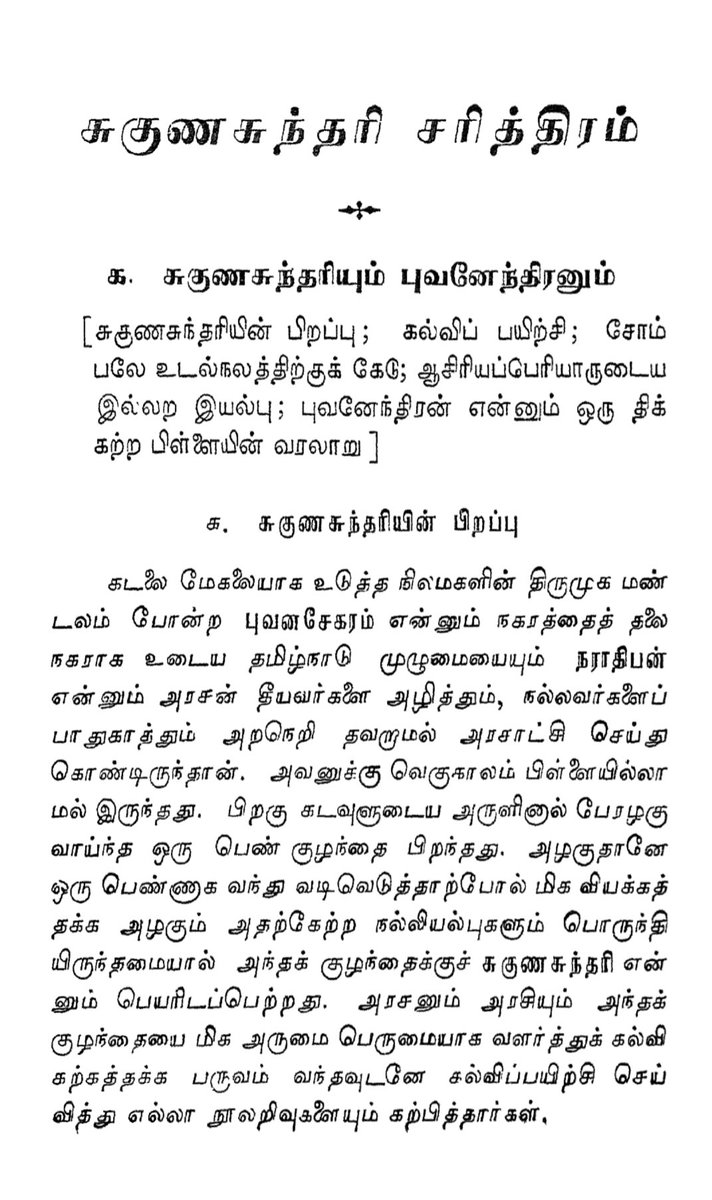
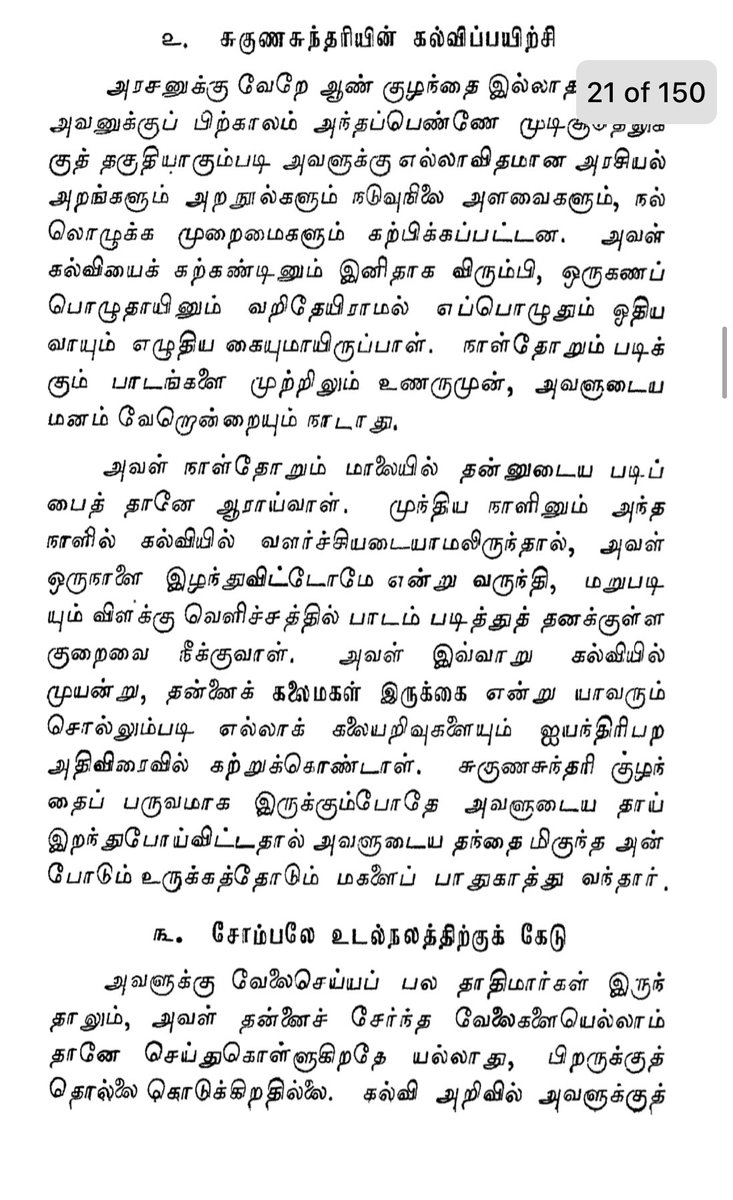
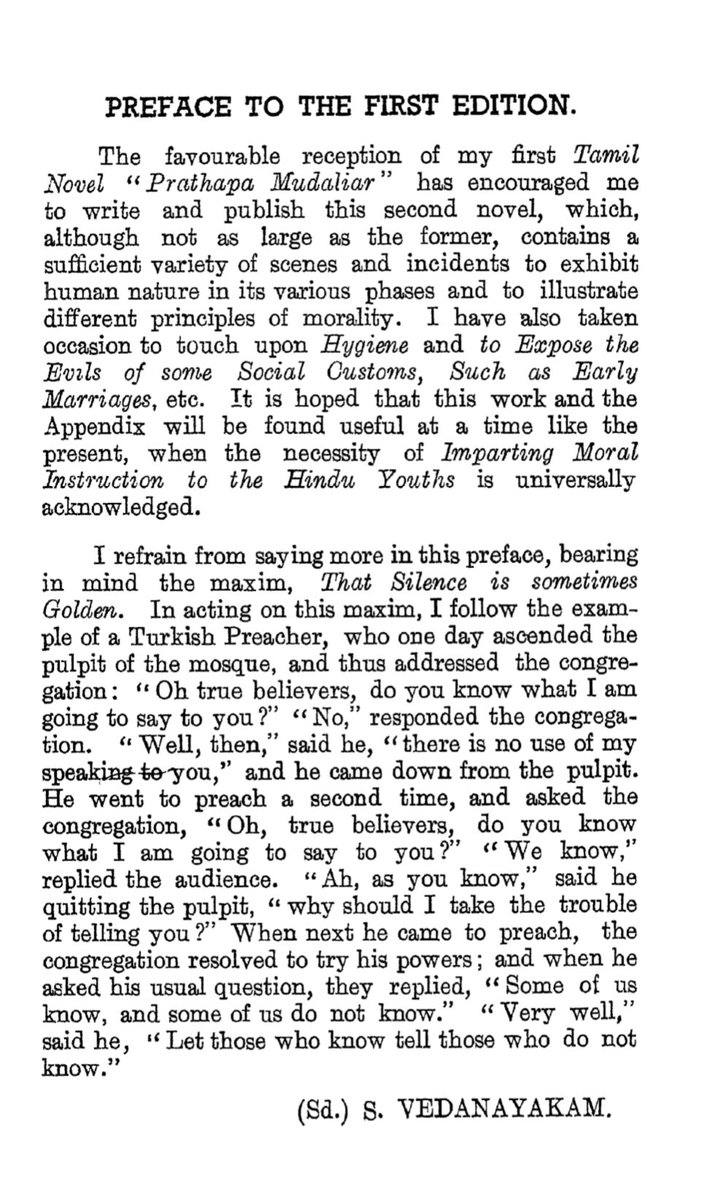
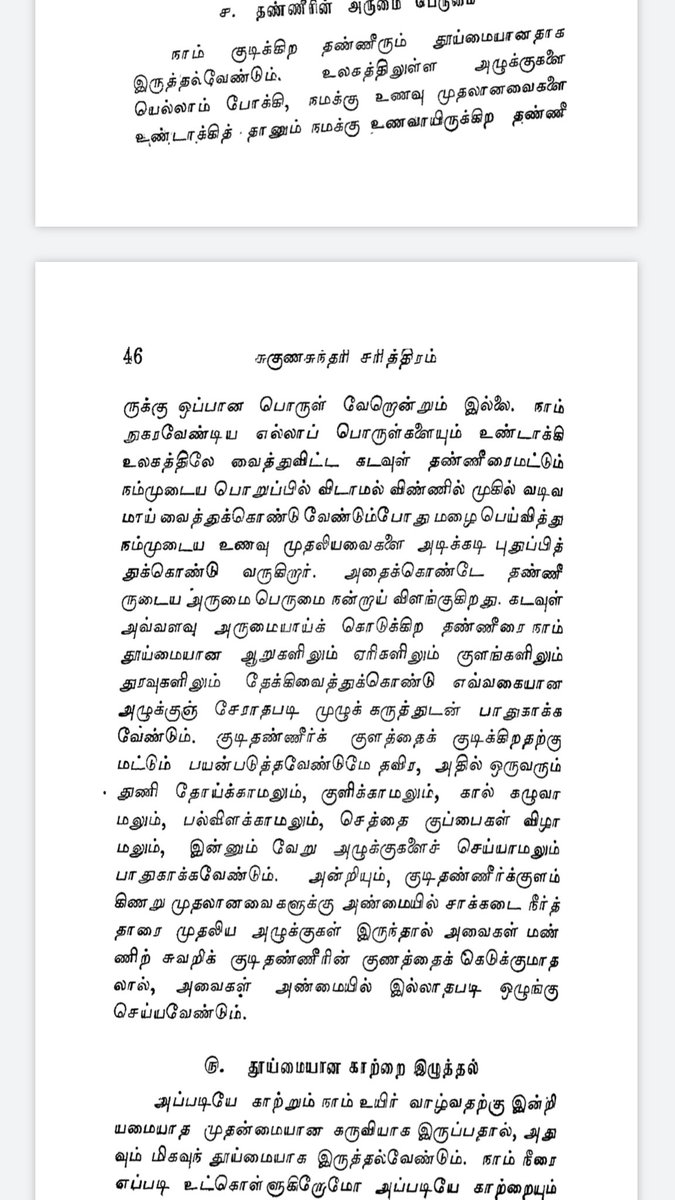
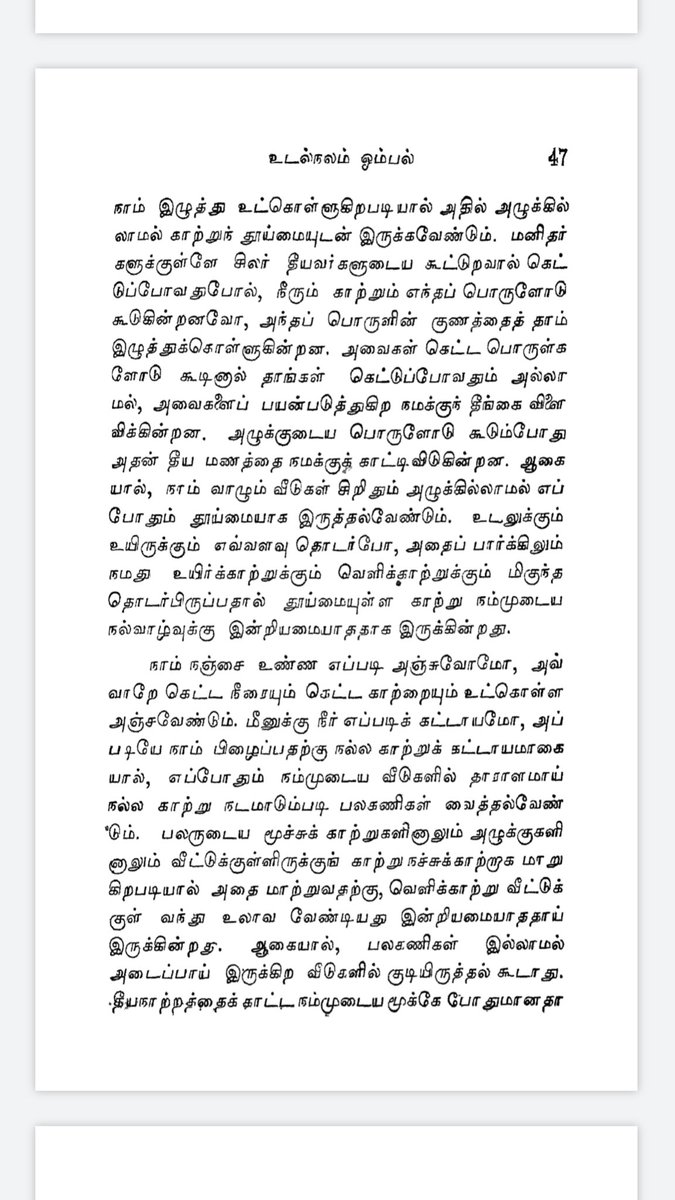
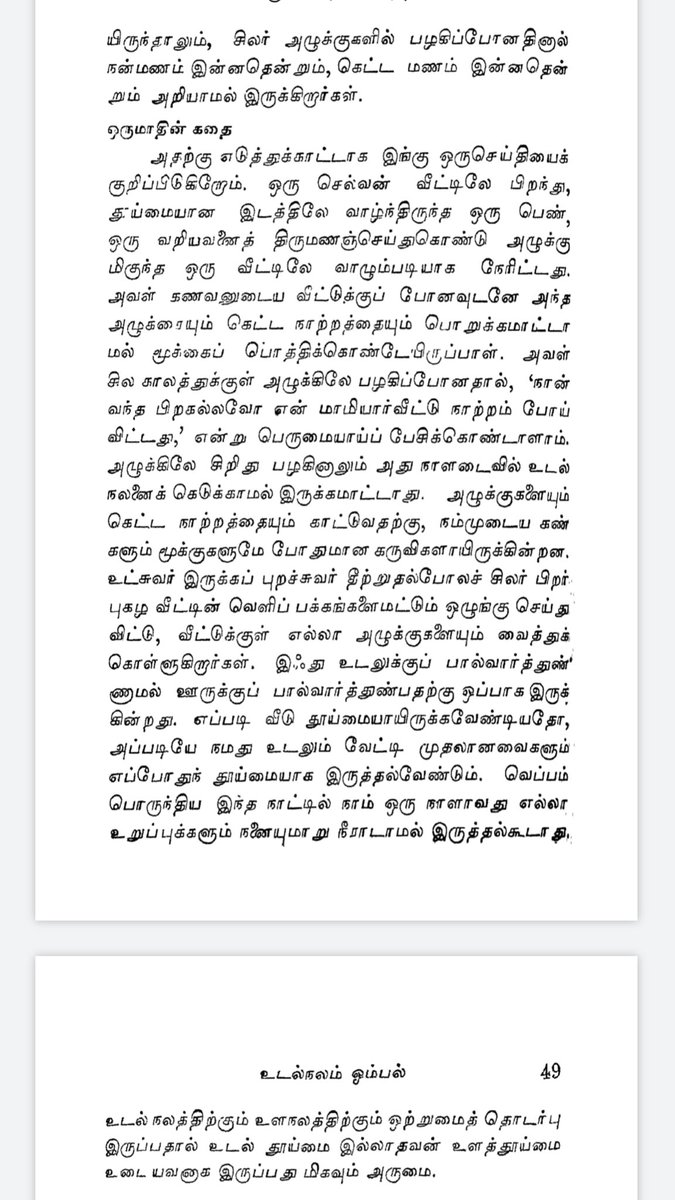
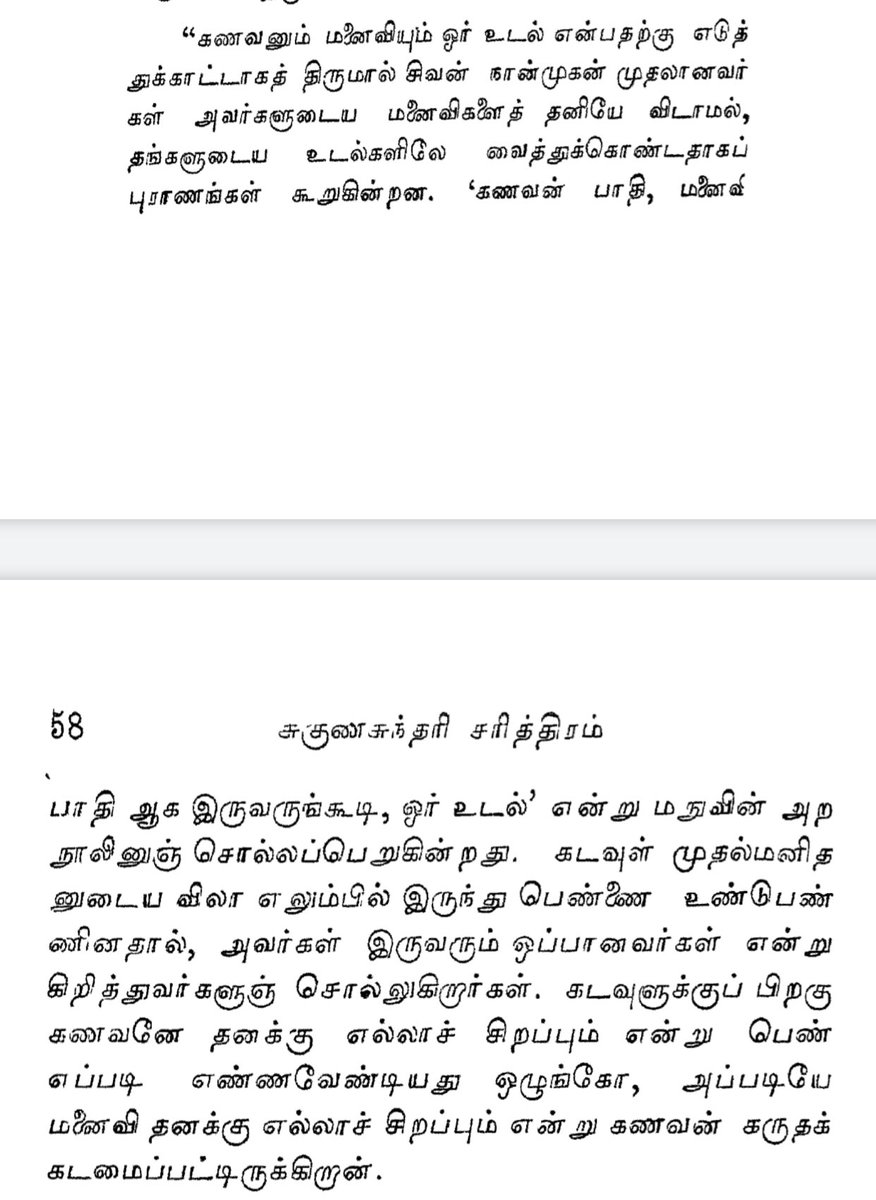
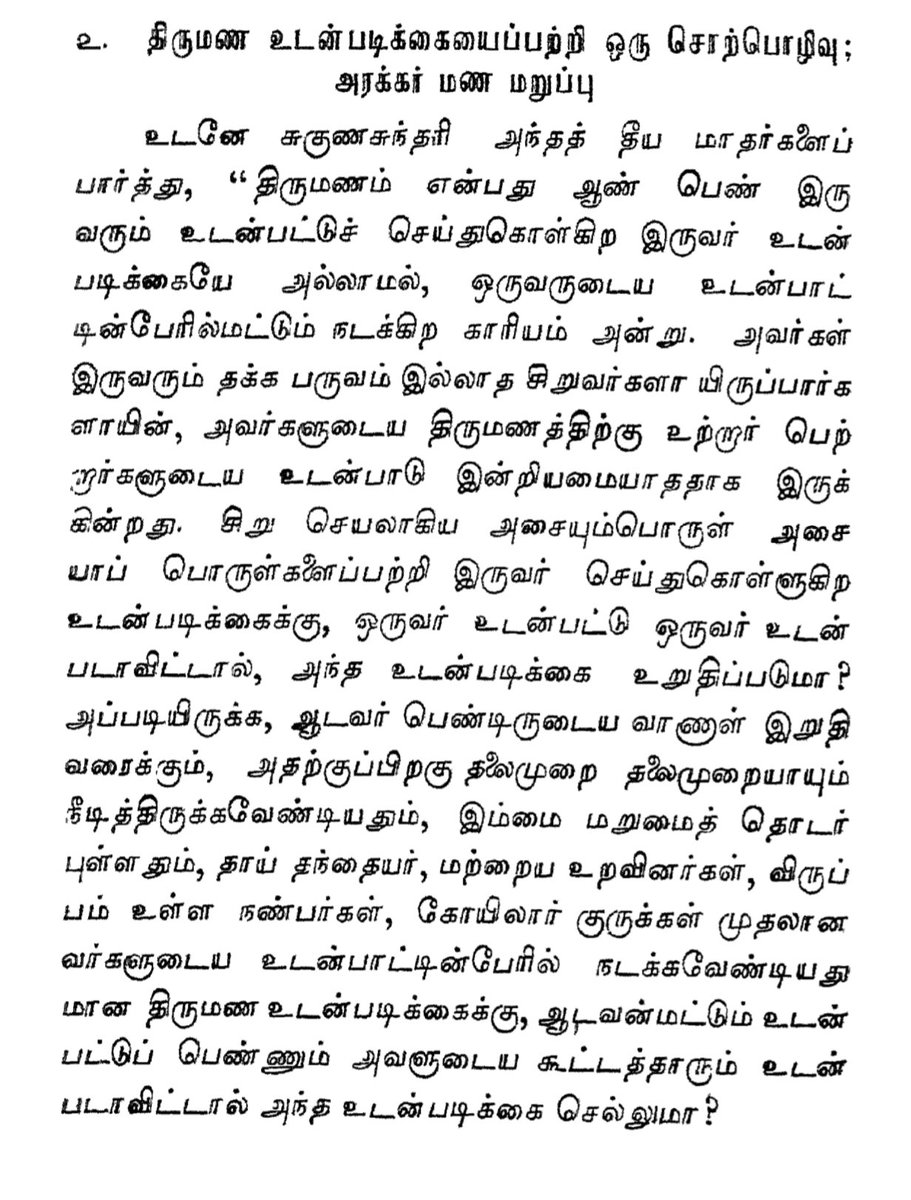
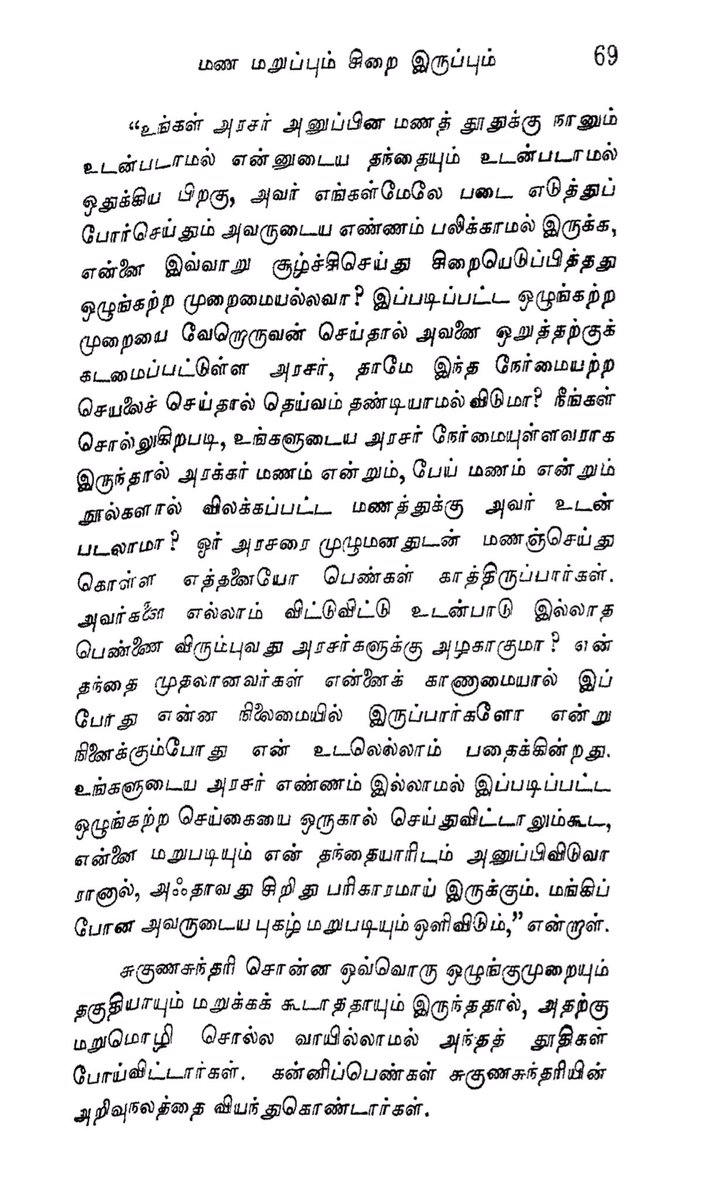
 She mentions several times that this practice was rampant amongs Brahmins..." title="She also criticises child marriage & the ills from it. Interestingly, the first objection she makes is that the husband-wife might grow physically quite different & that that would hinder kissinghttps://abs.twimg.com/emoji/v2/... draggable="false" alt="😀" title="Grinning face" aria-label="Emoji: Grinning face">She mentions several times that this practice was rampant amongs Brahmins...">
She mentions several times that this practice was rampant amongs Brahmins..." title="She also criticises child marriage & the ills from it. Interestingly, the first objection she makes is that the husband-wife might grow physically quite different & that that would hinder kissinghttps://abs.twimg.com/emoji/v2/... draggable="false" alt="😀" title="Grinning face" aria-label="Emoji: Grinning face">She mentions several times that this practice was rampant amongs Brahmins...">
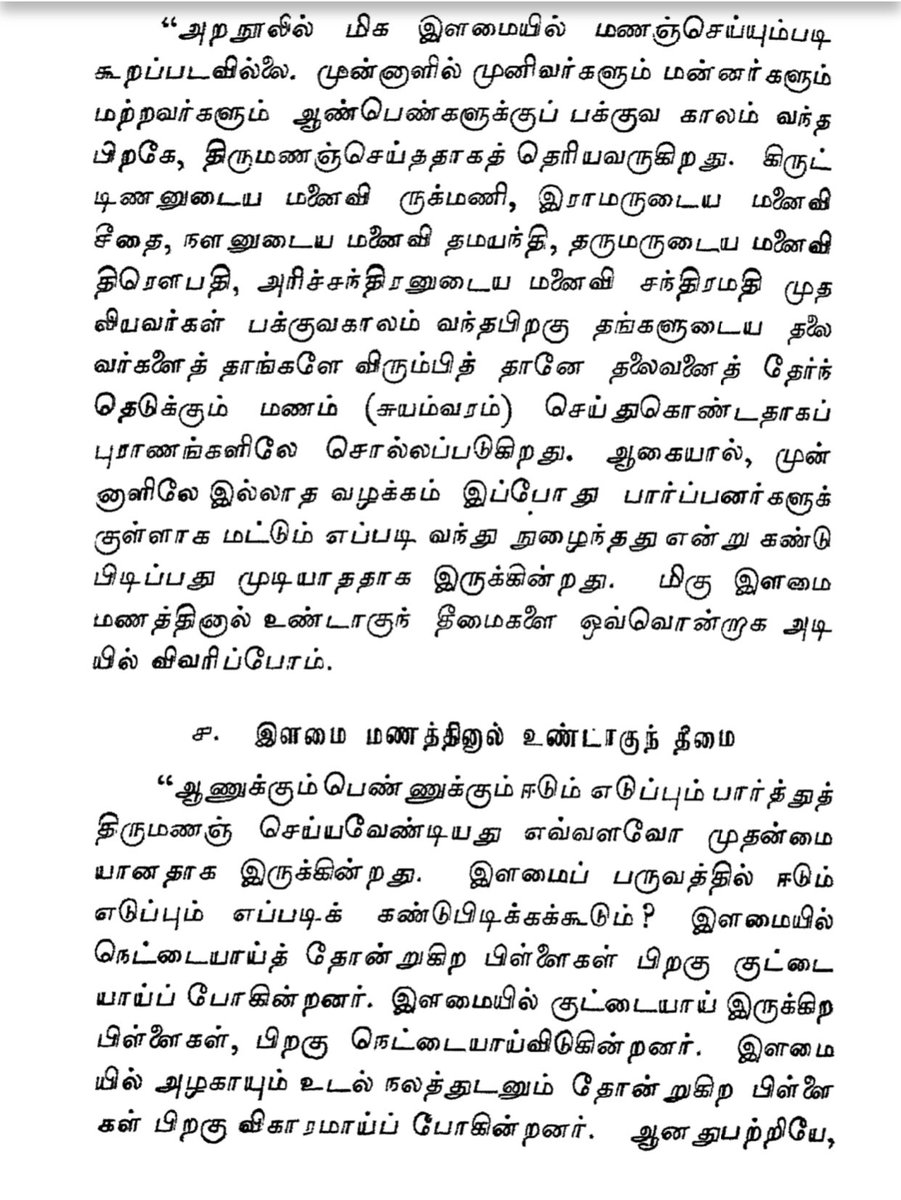 She mentions several times that this practice was rampant amongs Brahmins..." title="She also criticises child marriage & the ills from it. Interestingly, the first objection she makes is that the husband-wife might grow physically quite different & that that would hinder kissinghttps://abs.twimg.com/emoji/v2/... draggable="false" alt="😀" title="Grinning face" aria-label="Emoji: Grinning face">She mentions several times that this practice was rampant amongs Brahmins...">
She mentions several times that this practice was rampant amongs Brahmins..." title="She also criticises child marriage & the ills from it. Interestingly, the first objection she makes is that the husband-wife might grow physically quite different & that that would hinder kissinghttps://abs.twimg.com/emoji/v2/... draggable="false" alt="😀" title="Grinning face" aria-label="Emoji: Grinning face">She mentions several times that this practice was rampant amongs Brahmins...">
